|
O R A C L E O B S E R V A T O R Y Report 28 September 2008 |
|
|
I had planned to spend two nights at Oracle Observatory this trip. The weather forecasts for Saturday, 27 September deteriorated during the previous 36 hours. However, the forecast for Sunday, 28 September, was better, although some wind was forecast. I arrived at Oracle Observatory at 1220 MST. The temperature was 88°F with mostly clear skies and a slight breeze. The bad 8" LX90-ACF that replaced the first bad 8" LX90-ACF that was supposed to replace the extended backordered LXD75-8"SC that was to replace the stolen LXD75-8"SC has still not yet been received from Meade's repair service so I took my ETX-90RA and PST (Personal Solar Telescope) telescopes. Due to the house construction activities on our land in Oracle (see our "Road to Oracle" blog for details), I had to change where I set up. Where I had set up for the past three and a half years looked like this:

So I set up in the location where my observatory dome will eventually be located. In the photo below, you can see three of the stakes that mark the location where the concrete slab for the observatory will be.
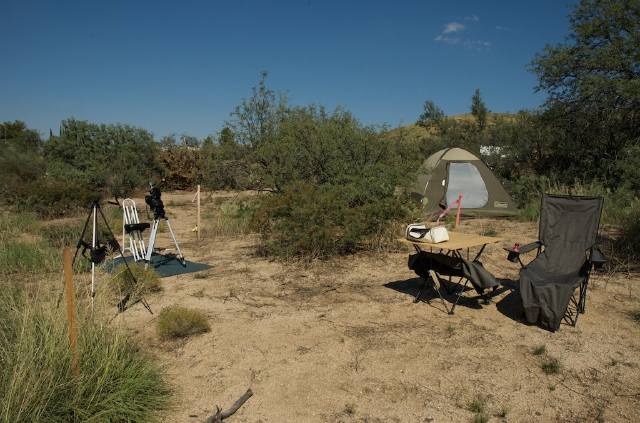
I finished setting up at 1400 MST and took some time to look at the sun with the PST. Even though the sun has been very "quiet" lately, there were two rather large prominences on the disk, about 180 degrees apart. They were very distinct in the PST.
I then did my usual walkaround. Here are some photos:
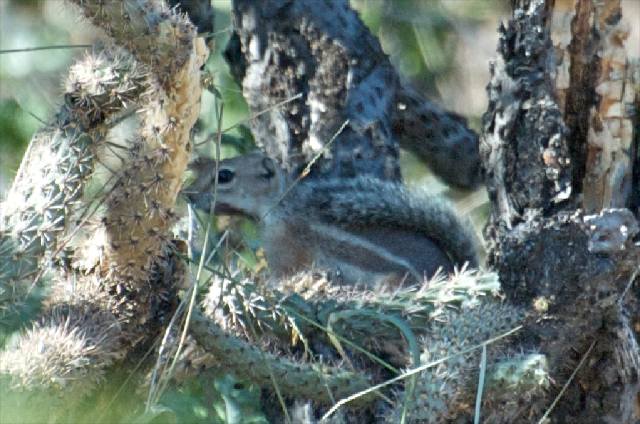
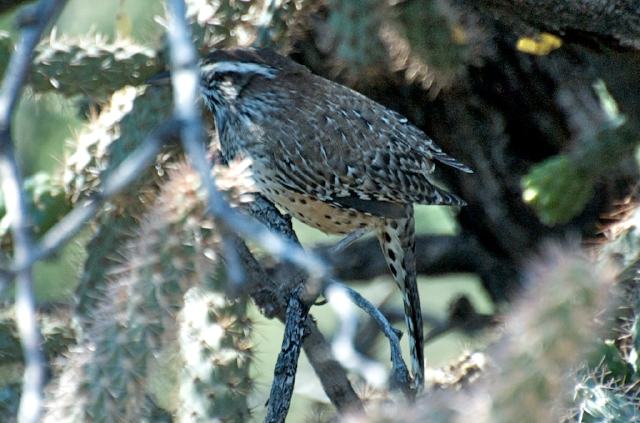
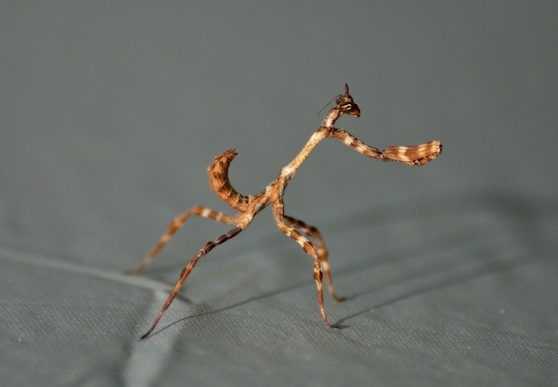
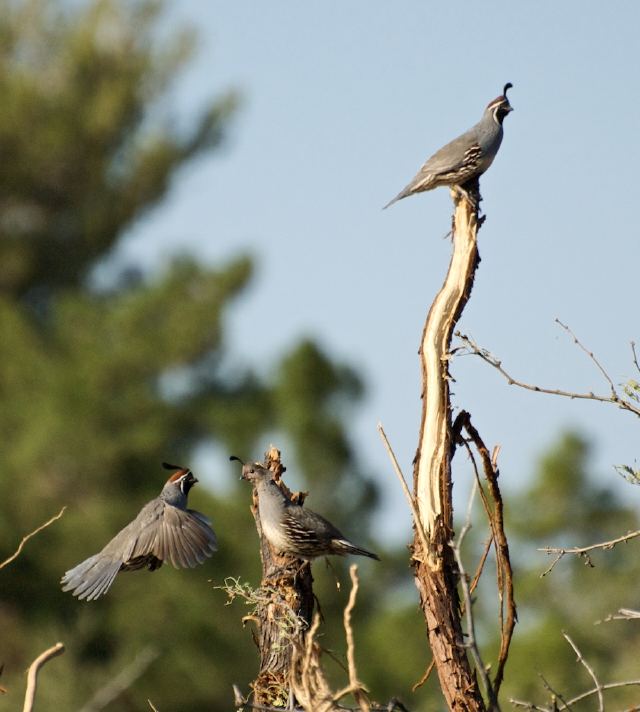

My plan for the night was to do some astrophotography with my Nikon D70 DSLR with a 18-70mm lens and 70-300mm telephoto lens piggybacked on my ETX-90RA. Here is the setup with the lens set for the 300mm focal length (equivalent to 450mm on a 35mm film camera).
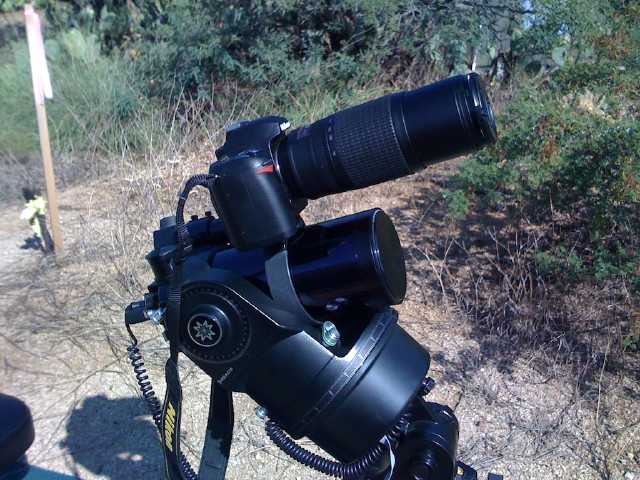
A nice sunset, with the temperature at 70°F:
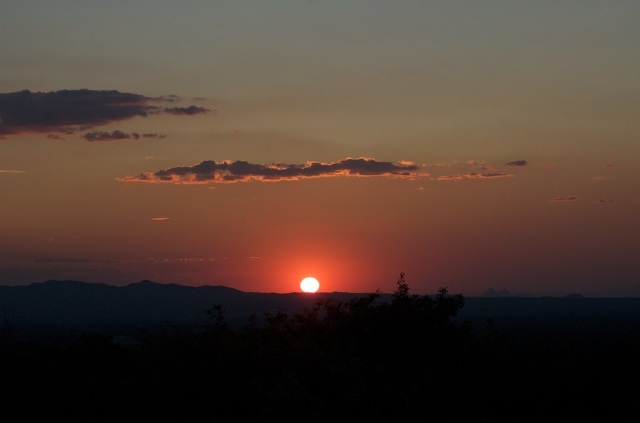
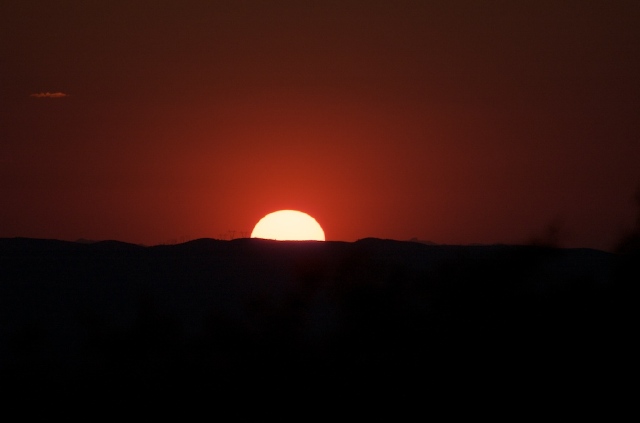
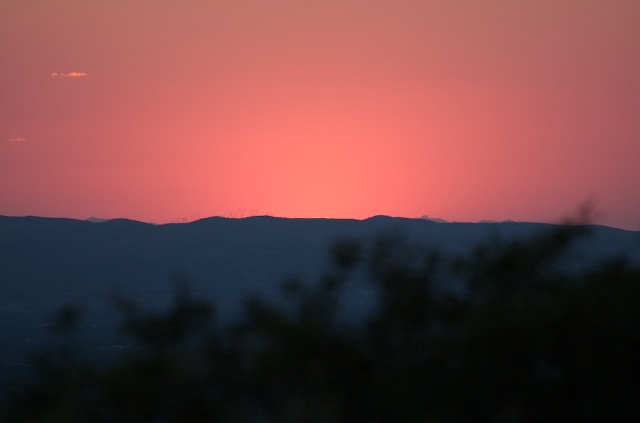
Although not easily seen in the last sunset photo, I managed to capture the "green flash" as the sun set behind the distant mountains.
Venus (the bright dot above the cloud in the center) was nice in the west:

After it got dark, I took this fullframe image of M13, the Great Globular Cluster in Hercules. It was taken at 1941 MST and is a 1 minute exposure at ISO 1250 through the 300mm lens piggybacked on the ETX-90.
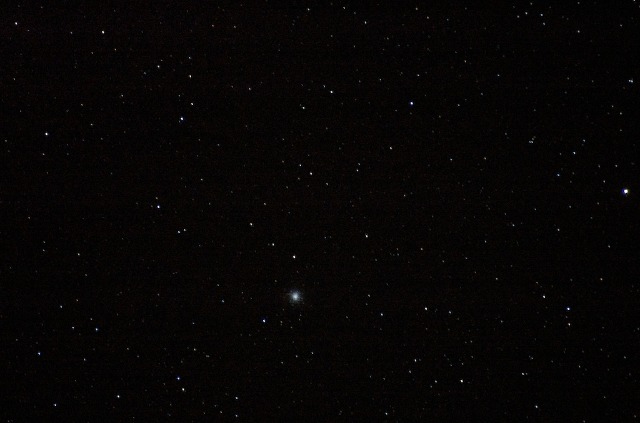
Next is a 5 minute exposure (same settings) of M31, the Great Andromeda Galaxy:
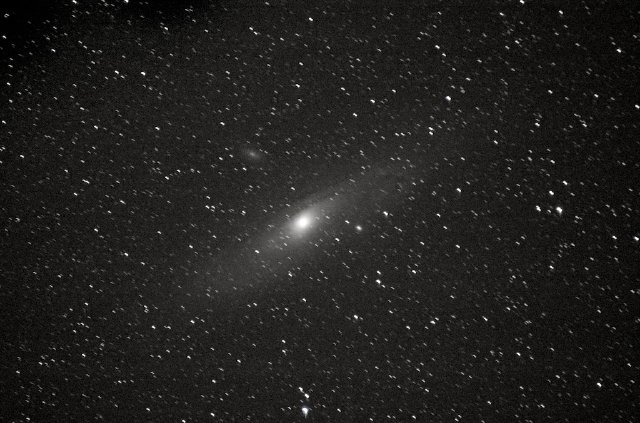
I then mounted the D70 DSLR and the 18-70mm lens on a photographic tripod. This 1 minute exposure, ISO 1250, 18mm focal length, unguided image shows Ursa Minor (the "Little Dipper") on the left (Polaris is the bright star down and to the left of center) and Cassiopeia on the right.
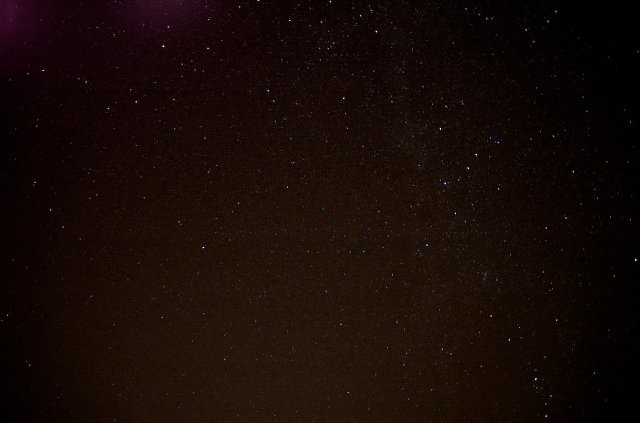
At 2042 MST I started this 30 minute (the maximum for the D70) unguided exposure of the northern sky. It shows star trailing due to Earth's rotation. The bright areas in the upper left are due to heat generated inside the camera during the long exposure.
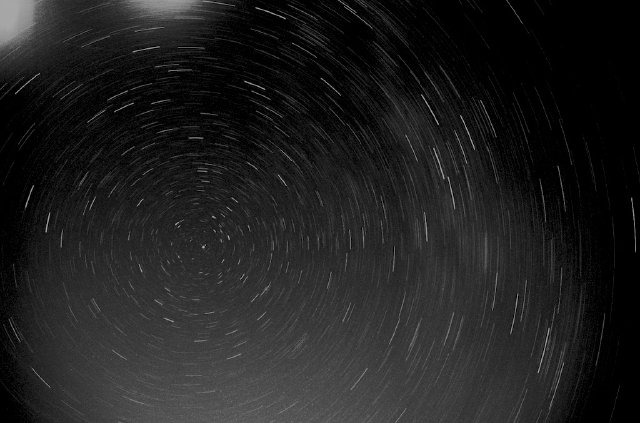
At 2100 MST I did some observing of Jupiter and its moons through a 15mm eyepiece (83X) on the ETX-90RA. It looked very nice but unfortunately the winds were getting stronger, hampering both astrophotography and visual work. I finally gave up both at 2115 and switched to using 7x50 binoculars. At 2200 I decided to close up for the night due to the winds.
It stayed windy all night but it was clear. I started packing up at 0530 MST and finished at 0800. I didn't leave until 1000 MST as I wanted to monitor some of the site construction activities that commenced at 0730.
Return to the Oracle Observatory Main Page.